
Make a working heart pump model, hold a stuffed animal “blood drive,” and more!

Kids need to learn how their bodies work and how to take care of them. Suffice it to say that the heart and circulatory system are a big part of that. Learning about the circulatory system through fun activities is hands-on—check your pulse to help students understand what’s happening—and it’s conceptual.
These hands-on, interactive activities teach and reinforce learning about the circulatory system. They’ll help kids learn how important it is to take care of their one and only heart!

This is such a cool way to introduce the circulatory system to kids! Make DIY invisible ink using supplies from your kitchen and draw a model of the system. Then, let kids reveal it like magic, helping them envision what lies beneath their skin.
Learn more: Circulatory system reveal activity at Taming Little Monsters

Draw an outline of the human body, then grab some red and blue clay or play dough to make arteries, veins, and the heart itself.
Learn more: Play dough circulatory system at The Pinay Homeschooler

Check the library or buy one of these smart books for pre-K and elementary-age kids.
Buy it: The Heart by Seymour Simon; The Big Red Heart by Z.B. Tucker; Heart Your Heart by Paul Showers; A Drop of Blood by Paul Showers, all at Amazon
ADVERTISEMENT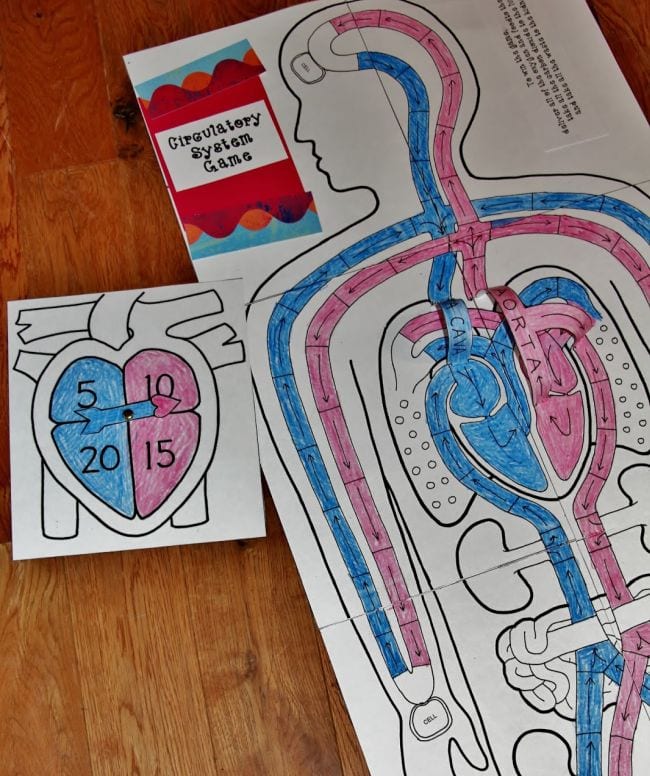
This free printable PDF game from Ellen McHenry is one of the most popular circulatory system activities around. Create a life-size body model, and spin your way around the system!
Learn more: Circulatory system game at The Fantastic Five
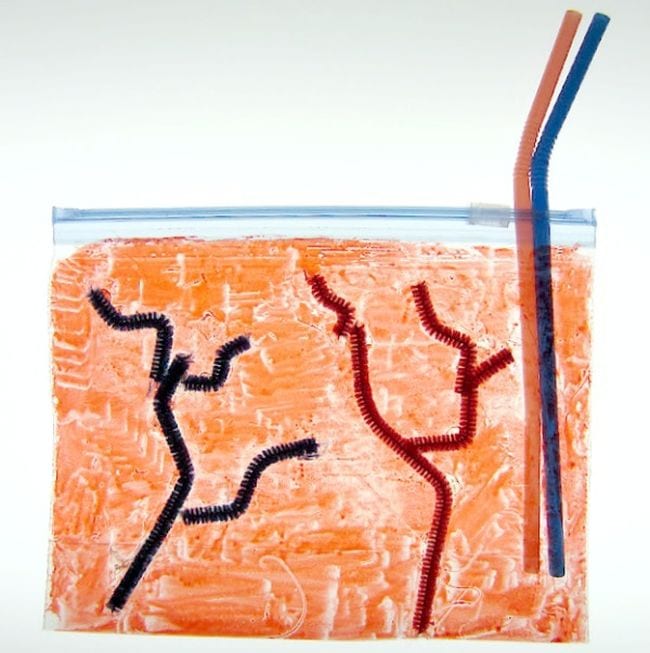
Make a simple heart model from a plastic bag, and use the straws to breathe into it and make it “beat” in rhythm.
Learn more: Circulatory system in a bag activity at Kids Activities Blog

The heart pumps about 1.3 gallons of blood per minute. Think you can keep up? Fill a container with water, then set a timer. Use a small cup to scoop water into another container as fast as you can. Can you beat your own heart?
Learn more: Pumping blood activity at Primary Theme Park
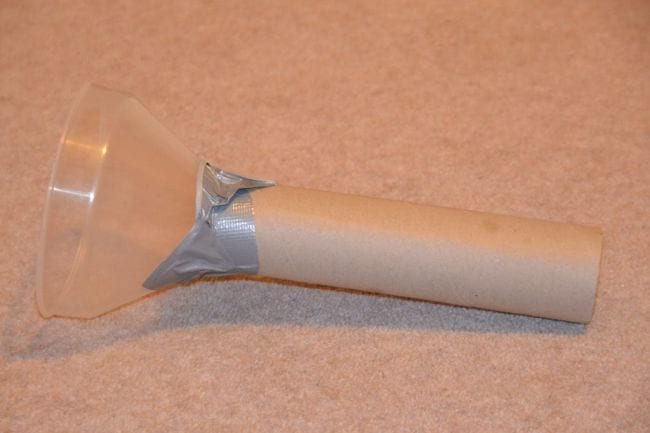
Kids know that doctors use stethoscopes to listen to their hearts. Make a simple version from a cardboard tube and plastic funnel so kids can try it on their own.
Learn more: Stethoscope activity at Science Sparks
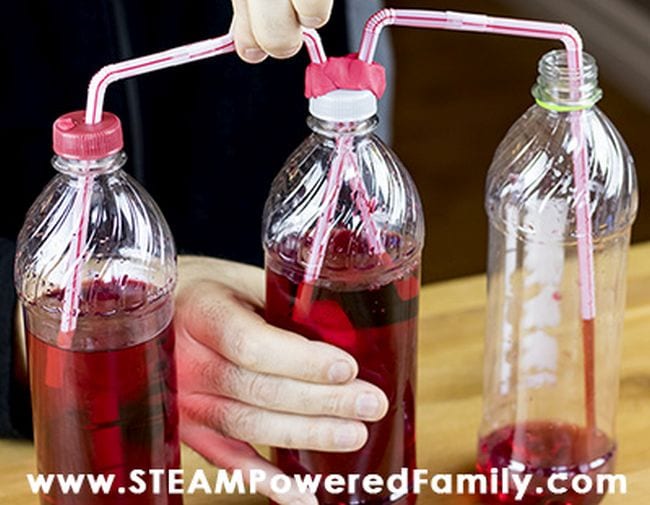
Now it’s time to learn how the heart does its job. Use plastic bottles and drinking straws to make a working model that actually pumps “blood” from one chamber to the next.
Learn more: Heart activity at STEAM Powered Family

The heart works with the veins, arteries, and capillaries to move blood around the body. Tie different colors of yarn together to represent the three and see how they all function together.
Learn more: Veins and arteries activity at The Fantastic Five

Put it all together with this functioning circulatory system model. Get step-by-step instructions at the link.
Learn more: Circulatory system model at Do Science

Take a closer look at blood and learn about the different types of cells, platelets, and the plasma that they all float around in. Use your favorite candies to represent each in this easy model.
Learn more: Bottle of blood activity at My Joy-Filled Life

Learning about blood types? This clever experiment with food coloring helps kids learn which types are compatible with each other. If the dyes stay the same color when mixed, the types are compatible. If they change color, then they’re not.
Learn more: Blood type experiment at Our Journey Westward
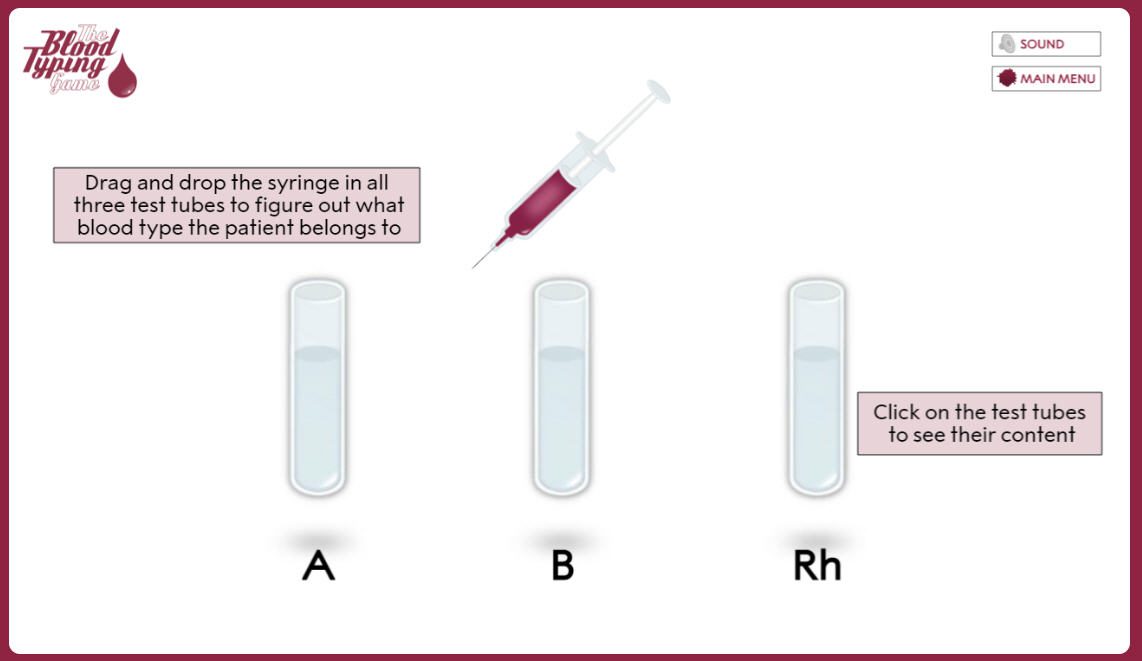
In this interactive online game, kids “draw blood” from a patient, then run tests to find the blood type and perform a lifesaving transfusion. You can take a tutorial first to learn how it all works
Learn more: The Blood Typing Game at Educational Games
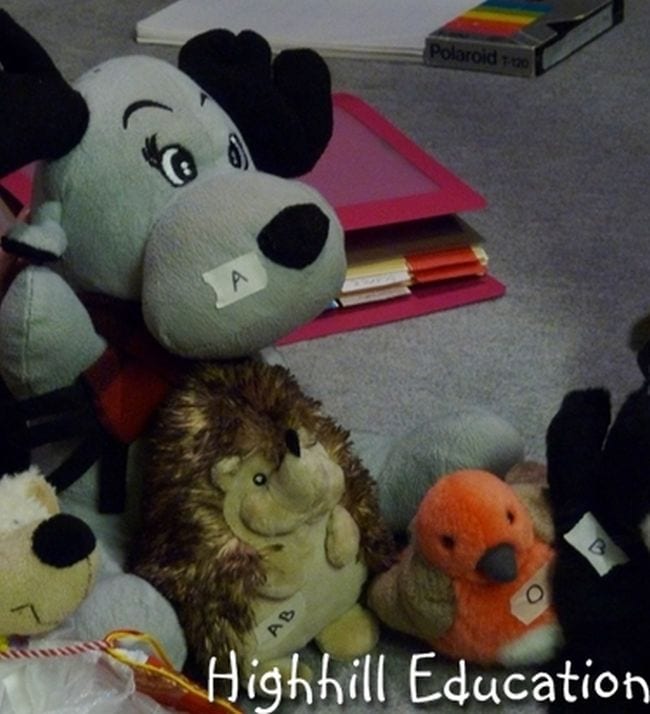
This might be the cutest of all the circulatory system activities! Gather up some stuffies, assign them “blood types,” then hold a blood drive! Kids learn about blood types and the importance of being willing to donate blood.
Learn more: Toy blood drive at Highhill Education
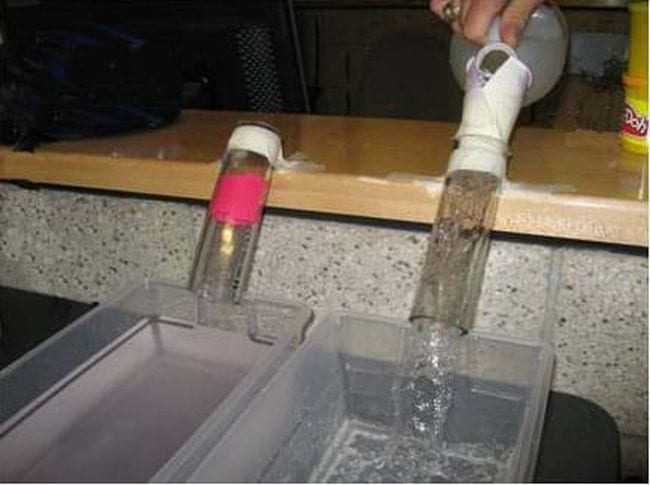
We talk a lot about “healthy foods,” but what makes some foods bad for your heart? Learn about cholesterol and its effects on veins and arteries with this effective demo.
Learn more: Arteries and veins activity via Teach Engineering

A healthy heart needs exercise too. Create a tic-tac-toe board with the free printables at the link, then toss a beanbag (bonus points for making heart-shaped ones!) to see which exercise you’ll do next.
Learn more: Heart-healthy exercises at Make and Takes
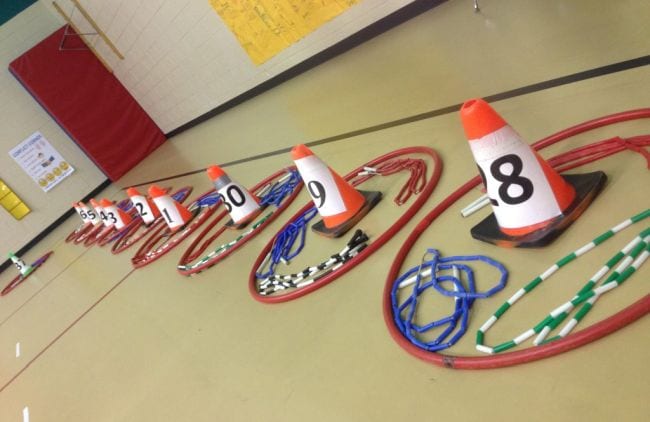
The American Heart Association created Jump Rope for Heart and Hoops for Heart to raise awareness about the importance of heart health for kids. Students have a chance to earn money to support cardiovascular research too.
Learn more: Jump Rope for Heart activities at The P.E. Specialist
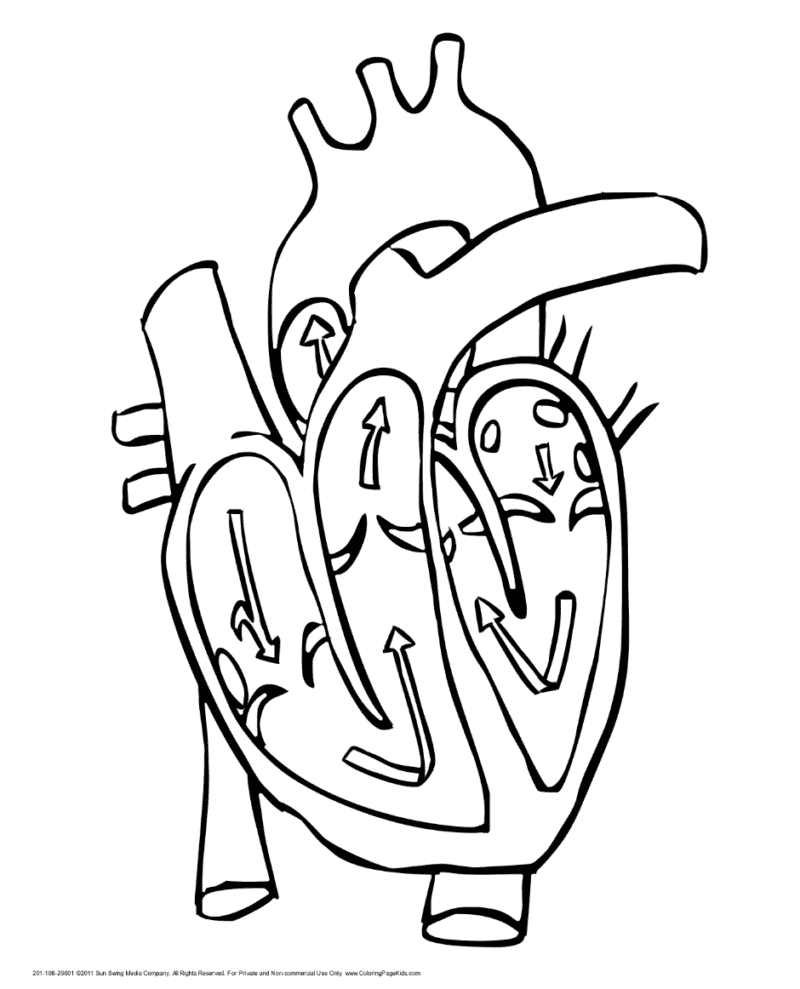
Teacherplanet.com has many coloring sheets that include opportunities for students to label each part of the heart and the respiratory system. Give your students some crayons or markers and let their creativity flow while simultaneously teaching them the parts of the heart.
Learn more: Heart coloring page at Teacher Planet

Separate your students into groups and give them 30 minutes to create as accurate a poster about the circulatory system as they can. Hang up the posters and keep them up while you finish your lesson plan, so your students can have a physical reference throughout the day.
Learn more: Circulatory system poster at Homeschool Den
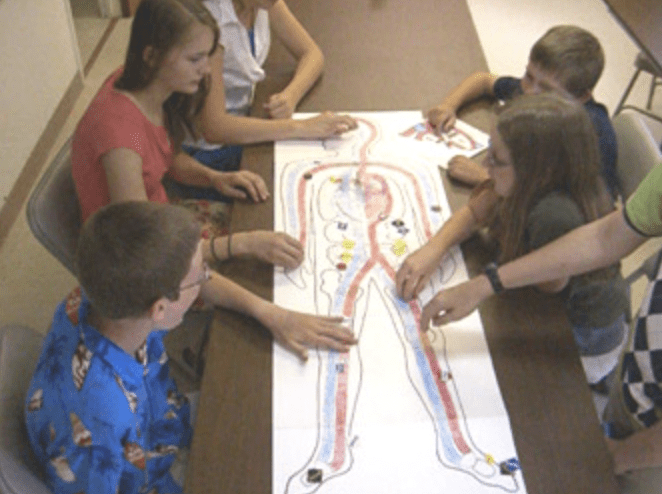
This game teaches students about circulation, including the “map” of the circulatory system in and out of the lungs. Ellenjmchenry.com has detailed instructions on how to set up this engaging game involving small teams, perfect for the classroom.
Learn more: The Circulation Game at Ellen McHenry’s Basement Workshop
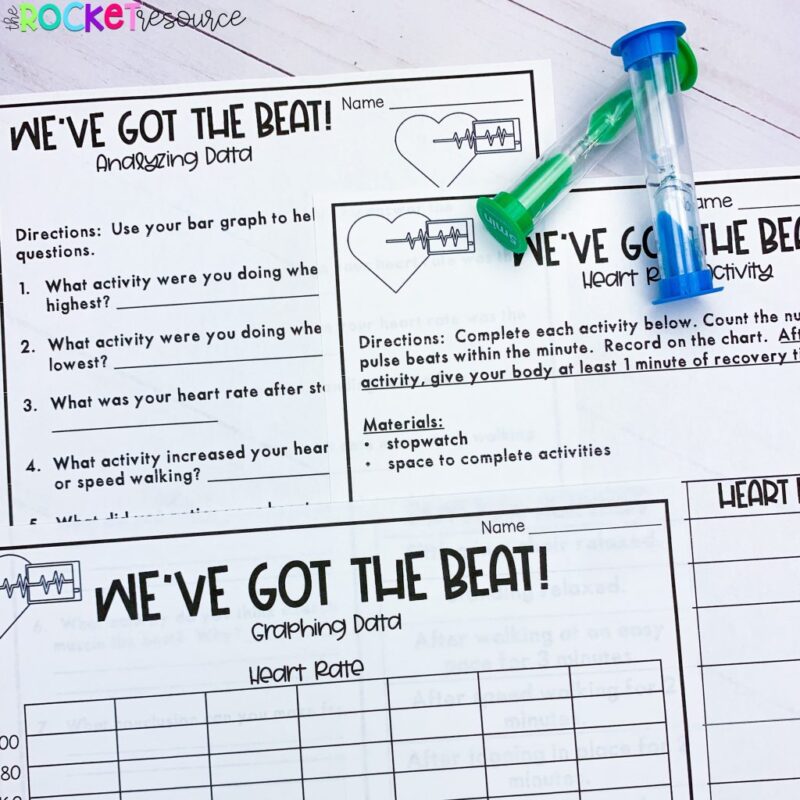
Have students take their resting pulse and record it. Then, run a few laps, do 20 jumping jacks or dance for one minute, and record their heart rate again. Talk about why their heart rate changes and what happens.
Learn more: Graph heart rate activity at The Rocket Resource

Another great use for play dough. Create a model of the heart and label the various parts.
Learn more: Heart model at Windhill 21

Create a sensory bin with plasma, red blood cells, white blood cells, and platelets for students to discover.
Learn more: What is blood? sensory bin at I Can Teach My Child
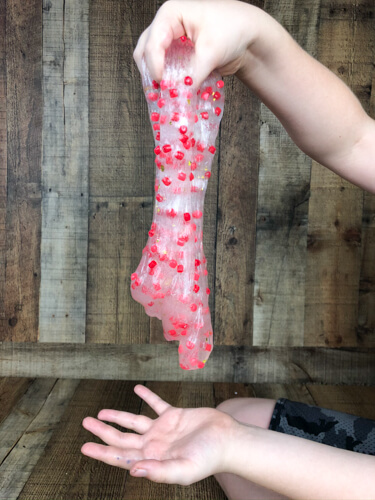
Another way to show what goes into slime is with this blood slime. The slime is clear and filled with red blood cells, white blood cells, and platelets. For older kids, look at the ratio of each type of cell and incorporate that into the blood slime.
Learn more: Blood slime at Royal Baloo
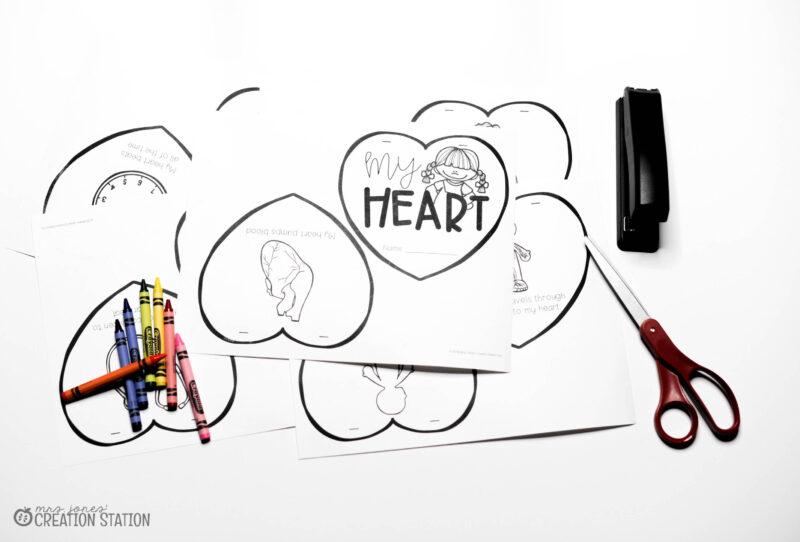
This cute booklet printable is a great way for students to take home what they’ve learned about the circulatory system.
Learn more: Heart booklet at Mrs. Jones’ Creation Station

This disc is a handy tool for studying the circulatory system.
Learn more: Circulatory system disc at Teaching in Room 6

Learn more: Circulation analysis activity at Teaching in Room 6
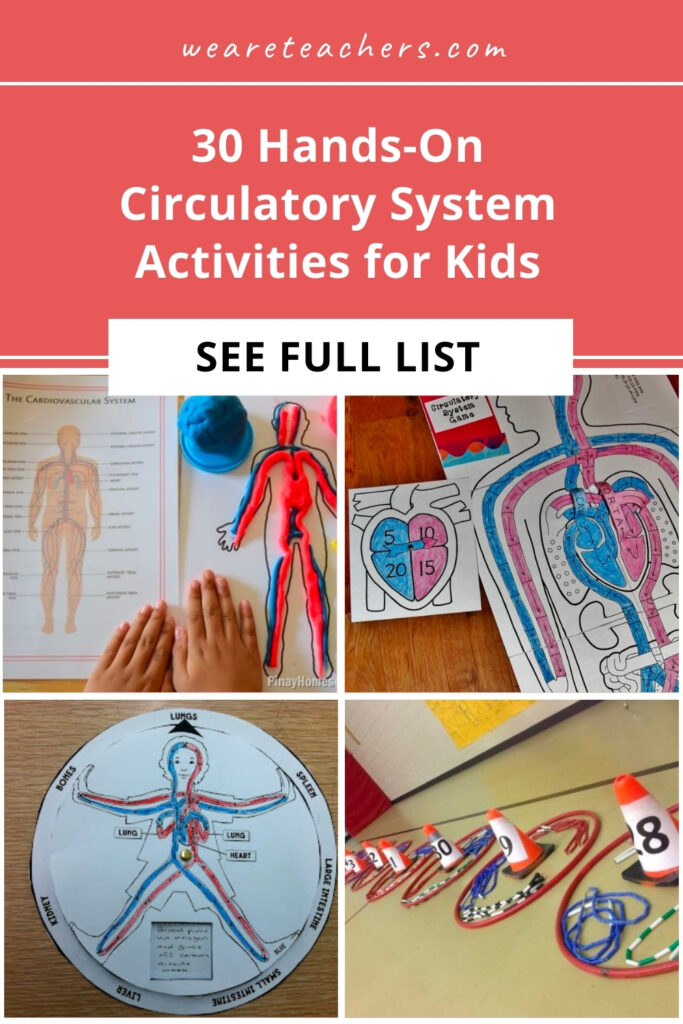
Share this article
Every product is independently selected by (obsessive) editors. Things you buy through our links may earn us a commission.